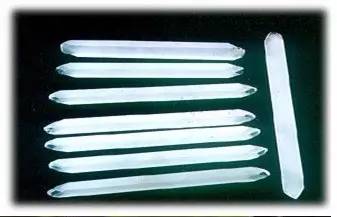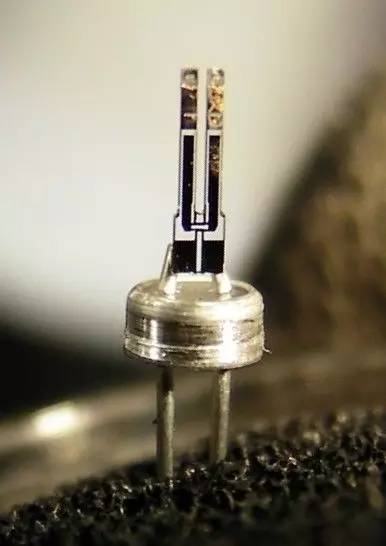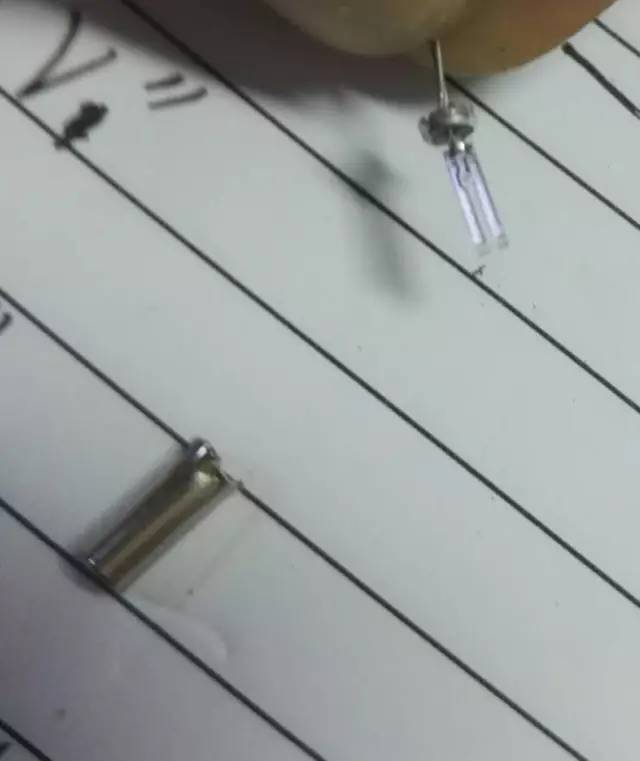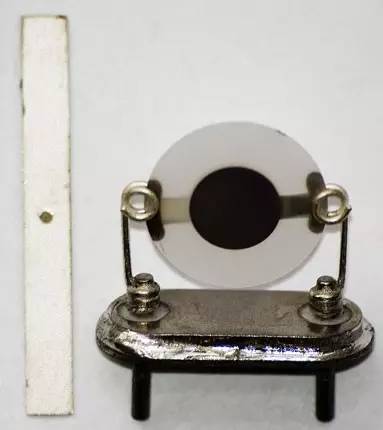Two young colleagues initially designed a circuit board using a 32.768 kHz crystal for the FC135 package. However, when they decided to use a 25MHz crystal instead, this new package was also created. Unfortunately, there was no communication with either the purchasers or the suppliers.
When it came time to order components, they were shocked to find that the 25MHz crystal in the FC135 package wasn’t available at all. The engineers who had debugged the circuit became very frustrated and started shouting.

Why do some crystals have a frequency of only 32.768kHz?
Let’s take a look at a long picture to compare:

We can see that the 32.768kHz crystal package has almost no overlap with other frequencies. Have any experienced engineers noticed a pattern in the crystal oscillator columns?
So why is this happening? What makes the 32.768kHz crystal special?
1. The Basic Principle of Crystal Oscillators
An oscillator is an energy converter that uses a quartz crystal resonator to determine its operating frequency. Compared to LC circuits, it offers higher precision, a higher quality factor, and better frequency stability. With high-precision frequency stabilization measures, a quartz crystal oscillator can achieve stability as good as 10^-4 to 10^-11.
The main function of a crystal oscillator is to oscillate, and it can be used for filtering and frequency selection. The quartz resonator acts like an RLC oscillating circuit.
Quartz, commonly known as crystal, is a hexagonal pyramidal crystal made of silicon dioxide (SiOâ‚‚). It is relatively hard and has three mutually perpendicular axes with anisotropy. The Z-axis is called the optical axis, the X-axis passing through the ridge of the hexagonal prism and perpendicular to the Z-axis is the electric axis, and the Y-axis, which is perpendicular to both X and Z, is the mechanical axis.

When pressure is applied along the electric or mechanical axis of the quartz wafer, charges are generated on the three sides of the electric axis, producing a voltage proportional to the deformation caused by the force. If tension is applied, a reverse voltage is generated—this is the positive piezoelectric effect.
When an electric field is applied along the electric axis, the wafer will extend or compress in the direction of the electric and mechanical axes, causing deformation. This is the inverse piezoelectric effect. When an alternating voltage is applied across the three sides of the crystal, the wafer vibrates mechanically, and these vibrations generate alternating charges on the inner surface of the wafer. Since the crystal is a resilient solid, it has an inherent mechanical resonance frequency for a certain mode of vibration. When the applied AC voltage matches the inherent mechanical resonance frequency, the amplitude of the mechanical vibration is maximized, and the current through the wafer is largest, resulting in resonance. Quartz wafers exhibit multi-harmonicity, meaning they can resonate at fundamental and harmonic frequencies. Typically, odd harmonics like 3, 5, and 7 are used. The vibration frequency of the wafer is inversely proportional to its thickness. Higher operating frequencies mean thinner wafers, which are weaker and harder to process, making them more prone to breakage. Overtone crystals are often used at higher frequencies, while fundamental frequency crystals are used below 20 MHz, and overtone crystals above 20 MHz.
A quartz crystal oscillator is a resonant device that uses the piezoelectric effect of a quartz crystal (silicon dioxide) to produce oscillation. Its basic structure involves cutting a sheet from a quartz crystal at a specific angle (called a wafer), which can be square, rectangular, or circular. Silver layers are applied as electrodes on two opposite faces, and lead wires are attached to each electrode pin, forming a package. Quartz crystal resonators, also known as crystals, are typically packaged in metal cases, but glass, ceramic, or plastic packages are also available.


The main parameters of a crystal oscillator include nominal frequency, load capacitance, frequency accuracy, and frequency stability. Different crystals have different nominal frequencies, usually marked on the package. Common examples include 48kHz, 500kHz, 503.5kHz, 1MHz to 40.50MHz, etc. For special applications, frequencies can exceed 1000MHz. Some crystals may not have a specified frequency, such as CRB, ZTB, Ja, etc.
Load capacitance refers to the total effective capacitance inside and outside the IC connected to the two leads of the crystal oscillator. It can be considered as a series capacitor in the circuit. Different load frequencies determine the oscillation frequency of the oscillator.
For crystals with the same nominal frequency, the load capacitances may vary. Because a quartz crystal oscillator has two resonant frequencies—one is a low-load capacitive series-oscillated crystal, and the other is a high-load capacitive parallel-oscillated crystal. Therefore, when replacing crystals with the same nominal frequency, the load capacitance must match exactly; otherwise, the equipment may not work properly.
Frequency accuracy and stability are crucial for high-end devices. Frequency accuracy ranges from 10^-4 to 10^-10, while stability ranges from ±1 to ±100ppm. Choosing the right crystal depends on the specific requirements of the equipment, such as in communication networks or wireless data transmission systems, where higher performance is needed. The parameters of the crystal determine its quality and performance. In practice, selecting the appropriate crystal based on specific needs is essential because crystals with different performances have different prices. The higher the price, the better the performance, but it's generally best to choose what meets the requirements.
When a crystal oscillator does not oscillate, it can be regarded as a plate capacitor Câ‚€, related to the geometry of the crystal and the electrode area, with values ranging from several picofarads to tens of picofarads. The inertia of the mechanical vibration of the crystal oscillator is equivalent to an inductance L, typically between 10^-3 and 10^2 H. The elasticity of the wafer is equivalent to a capacitance Câ‚, whose specific values depend on the cutting method, size, shape, and electrode configuration of the wafer.
Nominal frequency (F_L), load capacitance (C_L), frequency accuracy, and frequency stability are key parameters.
Crystal quality, cutting orientation, crystal oscillator structure, and circuit configuration collectively determine the performance of the oscillator.
F_s: the inherent frequency of the crystal itself, determined by how the crystal is cut, its thickness, and the equivalent thickness of the crystal electrode.
F = 2560/t(BT) F = 1670/t(AT)
 2. Tuning Fork Structure
2. Tuning Fork Structure
In simple terms, a crystal oscillator is a general term for a crystal resonator and a crystal oscillator. The resonator includes ceramic resonators and quartz resonators. Quartz resonators can be further divided into crystal oscillators and patch crystal oscillators. Plug-in crystal oscillators are also commonly referred to as tuning fork crystals, due to their shape resembling a tuning fork. These crystals typically operate in the kilohertz range, with the most common size being 3x8 or 2x6, and the most widely used frequency is 32.768kHz. In 2011, global production of tuning fork crystals exceeded 10 billion units, with a value of about $1.5 billion. In the same year, China produced over 4 billion tuning fork crystal oscillators, accounting for 40% of the world market. Even high-end electronic products rely on these inexpensive tuning fork crystals, as seen in the iPhone.
 And Apple's cooperation, is the number zero devices manufacturers competing goals. Phone zero devices, crystal and SAW filter, 32.768K crystal form is an integral part of .iPhone 5 in 5 models quartz crystal, among them Two tuning fork crystals . Usually we think that 32.768K crystal can only be applied to some low-end electronic products . In fact, this is a mistake . Most electronic products involved in data processing require crystal oscillators to provide clock frequency. Otherwise, it will not start or work effectively . It can be seen that the crystal oscillator, especially the tuning fork crystal oscillator, is an important component in electronic products.
And Apple's cooperation, is the number zero devices manufacturers competing goals. Phone zero devices, crystal and SAW filter, 32.768K crystal form is an integral part of .iPhone 5 in 5 models quartz crystal, among them Two tuning fork crystals . Usually we think that 32.768K crystal can only be applied to some low-end electronic products . In fact, this is a mistake . Most electronic products involved in data processing require crystal oscillators to provide clock frequency. Otherwise, it will not start or work effectively . It can be seen that the crystal oscillator, especially the tuning fork crystal oscillator, is an important component in electronic products.
Tuning fork crystal applications include clocks and watch movements, mobile phones, tablets, microcomputers, calculators, home appliance automation, and industrial automation. Currently, the downstream application market for China's tuning fork crystal oscillator has shown rapid growth, driving demand. In 2011, China produced 1.9 billion watch movements, requiring 1.9 billion tuning fork crystals in the market. It is one of the main application areas of tuning fork crystals; China's mobile phone production reached 1.13 billion units, requiring at least 1.7 billion tuning fork crystals. The tuning fork crystal oscillator industry plays a significant role; consumer electronics and microcomputer industries are also major application markets for tuning fork crystal oscillators. Compared to ceramic crystal oscillators, there are very few applications for mobile phones. Only some ceramic crystal oscillators are used in some ordinary telephones. In 2011, the output of China's consumer electronics (excluding mobile phones) reached 1.66 billion units, and the output of microcomputers was 3.2 billion units, with a demand for tuning fork crystals in these two areas reaching around 2 billion.

3. The frequency range of the no-slice mode is unreasonable.
Wafer cutting:
The most important component of a crystal oscillator is the crystal vibrator, which is cut from a quartz crystal according to specific rules, also known as a wafer.
There are three types of commonly used wafers: round, square, and SMT (smaller square).

The wafer can be cut into AT-CUT, BT-CUT, CT-CUT, DT-CUT, FT-CUT, XT-CUT, YT-CUT, as shown in Figure 7. These are named based on the optical axis (Z-axis). Each cut corresponds to a specific angle. The choice of cutting method depends on the actual situation. If better temperature characteristics are required, AT-CUT should be used. For higher frequencies, BT-CUT is preferred. The cutting mode, geometry, and size of the wafer determine the frequency of the crystal.
| Slice method | Frequency Range | mode | angle |
| AC | 31° | ||
| AK | Thickness | ||
| AT | 0.5–300 MHz | Thickness shear (c-mode, slow quasi-shear) | 35°15', 0° (<25 MHz) 35°18', 0° (>10 MHz) |
| BC | −60° | ||
| BT | 0.5–200 MHz | Thickness shear (b-mode, fast quasi-shear) | −49°8', 0° |
| CT | 300–900 kHz | Face shear | 38°, 0° |
| DT | 75–800 kHz | Face shear | −52°, 0° |
| E, 5°X | 50–250 kHz | Longitudal | |
| ET | 66°30' | ||
| FC | Thickness | ||
| FT | −57° | ||
| GT | 0.1–3 MHz | Width-extensional | 51°7' |
| H | 8–130 kHz | Length-width flexure | |
| IT | Thickness | ||
| J | 1–12 kHz | Length-thickness flexure | |
| LC | Thickness | 11.17°/9.39° | |
| MT | 40–200 kHz | Longitudal | |
| NLSC | |||
| NT | 8–130 kHz | Length-width flexure (bending) | |
| RT | |||
| SBTC | |||
| SC | 0.5–200 MHz | Thickness | 35°15', 21°54' |
| SL | Face-shear | −57°, 0° | |
| TS | |||
| X | |||
| XY, tuning fork | 3–85 kHz | Length-width flexure | |
| X 30° | |||
| Y |
4. The Tuning Fork Structure and Other Crystal Oscillator Size Comparison
This is my actual disassembly of the 32.768kHz crystal, showing you the tuning fork structure.



Therefore, the frequency of crystals used in high-speed chips such as MCUs and CPUs is above 1MHz, which is why the main crystal package is generally different from the 32.768kHz package.
The tuning fork structure has been widely used, and if the internal structure is a tuning fork, the outer casing is often shaped like Yao Ming, which is slim and long. The cutting mode of high-frequency crystals cannot be the tuning fork structure.
I am not a crystal cutting manufacturer, but through logic reasoning and analysis, I used detective methods to explore the reasons for packaging differences. There may be mistakes, so I hope masters and manufacturers can correct me.
At the same time, I remind engineers to never take things for granted. When choosing a crystal package, it is best to confirm before design.
Original Vape Bang Tn 12000,Original Bang Tn 12000,12000 Puffs Bang Vape,1200 Puffs Disposable Vape
Longhua Manxueling Trading Company , https://www.mxlvape.com
